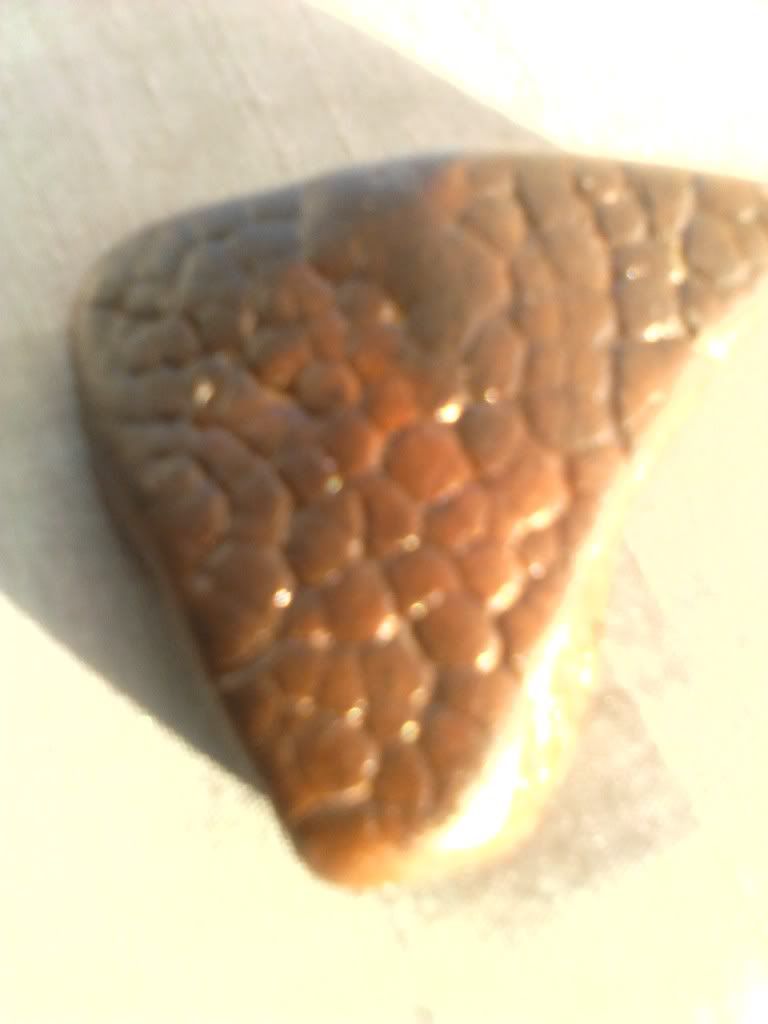I have some questions please if someone would be so kind as to answer, it would be appreciated. I am including a photo for illustration purposes only. My camera is broken and I took this with my phone for easy uploading. I am not asking for authenticity ratings based on phone pics. Early spring garden find that was set aside as a curiosity then, forgotten. While researching other things, I came across some references to " dinosaur skin" fossils. I pulle d this out of the box and looked again. This piece is close to 2 in. on each side and 3/8 thick but one plane curves at the middle creating one point of the triangle that is 1/4 thick. The pattern is the same on all of the other sides of it also. Although 2 of the edges are much smaller " grain" and and very lightly incised. The piece was wet for this picture so that the detail would stand out. So, my questions are, how rare is it to find fossil reptile skin? Has anyone here ever found or seen anything like it? It is the same color and texture of some museum fossils but at first uneducated glance last spring, I had thought it might be iron. Have you seen artifacts made with fossils? How about fossil bone and teeth worked as though it were stone? What other things could this be?










Comment